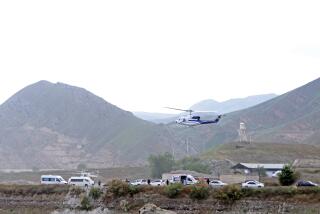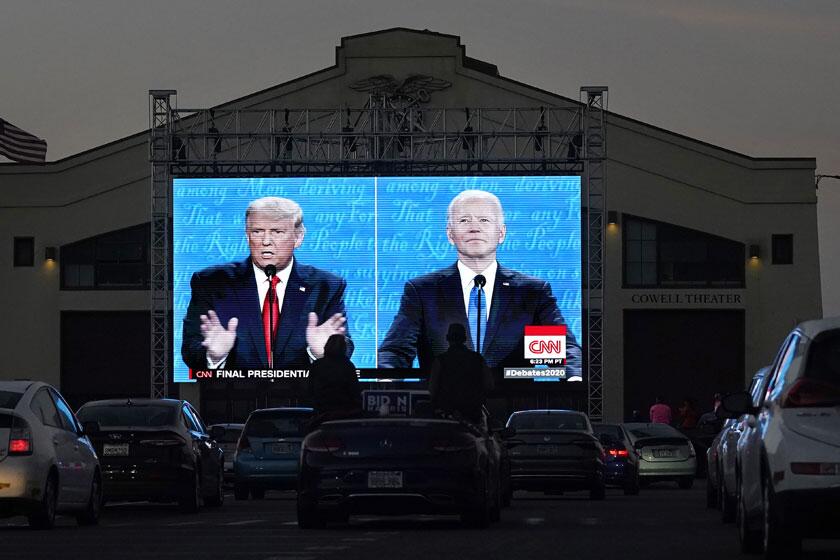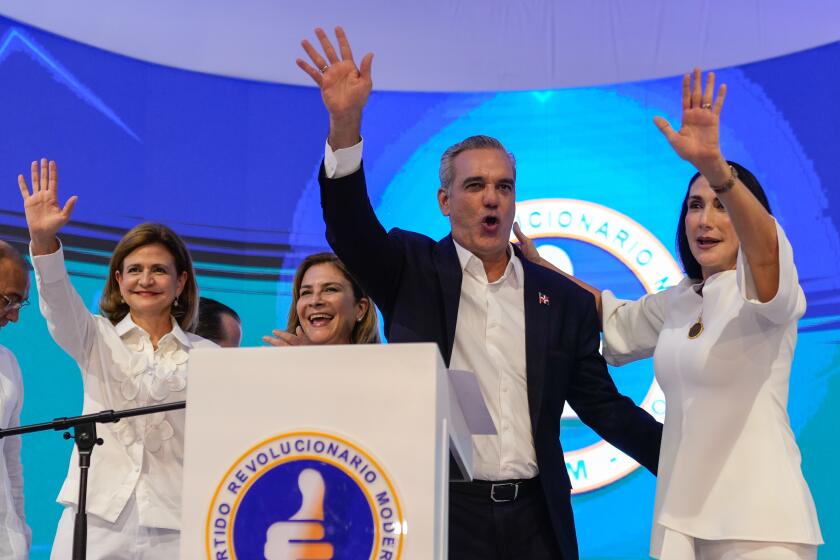Slovak Nuclear Reactors Fuel Angst
Tears roll down Michal Klepac’s cheeks as he shakes his cane at the nuclear power plant where two Soviet-era reactors are slated for closure by a government eager to please the European Union.
The retired maintenance worker thinks it’s foolish for Slovakia to close part of the Jaslovske Bohunice plant, slashing hundreds of jobs.
It’s part of a sweeping reform program aimed at winning membership for Slovakia in the 15-nation EU, some of whose members are wary of nuclear power.
“It’s the biggest stupidity that the government could have made,” says Klepac, 74. “Why do we have to change what works?”
The plant’s closure underlines the struggle that Slovakia and other former Soviet Bloc countries are facing in making hard choices to win membership in the European club. They are imposing inflation controls, cutting jobs at inefficient businesses and inflicting other kinds of economic pain to reform their economies.
Some fear the changes will lead to social and political instability in this country of 5.4 million, formerly part of now defunct Czechoslovakia.
“There is a danger that since the country must make these painful changes, some populist and ultranationalist politicians could come back to power. And that is very dangerous,” said Milan Reban, a political scientist at the University of North Texas who studies the former communist countries of Europe.
The risk of the screws being tightened too hard or too fast threatens places like Jaslovske Bohunice, a village 35 miles from the capital, Bratislava.
About 1,200 people--mostly from this village of 1,700--will lose their jobs when the two reactors are taken offline in the next five years or so. Thousands more who do contract work in about 200 villages surrounding the plant will also lose their main income.
But the effects will be nationwide, say energy experts who warn that energy prices are certain to rise when the reactors are closed.
Shutting down the two oldest of the plant’s four reactors will take away 16% of Slovakia’s electricity production. The two others produce 22%, and a nuclear-powered plant in Mochovce provides 21%.
“We were pressured to make this decision,” says Pavol Hamzik, deputy prime minister for EU integration. “We had to pay this high price if we wanted to catch up with our neighbors.”
Slovakia’s leaders began campaigning for EU membership later than neighbors like Hungary, the Czech Republic and Poland. Post-communist leader Vladimir Meciar had kept the country out of Western institutions and attempted to move Slovakia closer to Russia’s orbit.
Meciar was voted out in 1998. His successor, Prime Minister Mikulas Dzurinda, moved to reform the shaky economy, passing austerity measures that have propped up the currency. He almost halved the trade deficit, from $1.8 billion in 1998 to $922 million in 2000.
Although European Union membership for Slovakia is probably years away, Dzurinda is trying to prepare the way. He has begun pushing through changes to make laws conform to the EU’s, and he has made other concessions, such as pledging to shut reactors at Jaslovske Bohunice.
The EU studied the issue in 1992 and decided the plant could not be upgraded at a reasonable cost. It made shutting the two old reactors a condition for Slovakia’s joining the bloc.
To the village, losing even part of the sprawling facility--incongruously named “Atomka,” or “tiny nuclear plant”--is likened to losing a friend.
“Atomka” is the center of village existence. Just about everyone here has worked in it, toured it or at least seen it on television, where it was often showcased during the communist years as an example of Soviet engineering prowess.
Even after communism’s fall, people kept their affection for its eight cooling towers, taking comfort in the gentle puffs of steam that hang over the barren fields surrounding the plant for 1 1/2 miles on every side.
Workers at “Atomka” earn twice the average monthly wage of about $250. The unemployment rate in this area is 8%, compared with up to 40% in some places.
Workers have invested in their homes, building peaked-roof cottages in pastel shades with gardens, trees and swing sets for the children. BMWs and minivans are parked on paved roadways.
Though the U.N. nuclear agency deemed the plant to be safe, antinuclear campaigners fear the aging reactors could create a catastrophe reaching far beyond this small Central European country’s borders.
“The plant does not fulfill all of the security requirements,” argues Lubica Trubiniova, director of Greenpeace activities in Slovakia. “Nobody really knows how long a reactor should operate.”
People like Klepac, the retiree, think the price of EU membership is too high. He’s betting the government will cave in to public pressure eventually and keep the reactors operating.
“All of my family works at the plant--all four of my children,” he says. “Who will give them work now?”
More to Read
Start your day right
Sign up for Essential California for news, features and recommendations from the L.A. Times and beyond in your inbox six days a week.
You may occasionally receive promotional content from the Los Angeles Times.






